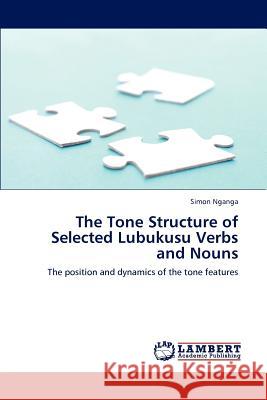The Tone Structure of Selected Lubukusu Verbs and Nouns » książka
The Tone Structure of Selected Lubukusu Verbs and Nouns
ISBN-13: 9783848499915 / Angielski / Miękka / 2012 / 140 str.
Where and when does tone occur? Are there instances when tone or its bearing unit (the syllable) is non-existence? How can such situations be represented? What underlying aspects motivate change in tone realizations or syllable realizations? Focusing on selected verbs and nouns, this book attempts to answer these questions made critical by the fact that tone in Lubukusu is not marked in the orthography. It is to be argued that as a tone language Lubukusu cannot be understood, learnt and spoken without an understanding of the tone structure of its key word groups-the verbs and nouns. Drawing principles from Autosegmental Phonological theories and Hymans Natural Tone Rules, the book provides an interesting insight into the tone structure that is a product of the dynamic interaction between tone features and the syllable.The book also discusses the various factors that determine the occurence and change in tone in Lubukusu verbs and nouns."
Where and when does tone occur? Are there instances when tone or its bearing unit (the syllable) is non-existence? How can such situations be represented? What underlying aspects motivate change in tone realizations or syllable realizations? Focusing on selected verbs and nouns, this book attempts to answer these questions made critical by the fact that tone in Lubukusu is not marked in the orthography. It is to be argued that as a tone language Lubukusu cannot be understood, learnt and spoken without an understanding of the tone structure of its key word groups-the verbs and nouns. Drawing principles from Autosegmental Phonological theories and Hyman´s Natural Tone Rules, the book provides an interesting insight into the tone structure that is a product of the dynamic interaction between tone features and the syllable.The book also discusses the various factors that determine the occurence and change in tone in Lubukusu verbs and nouns.











